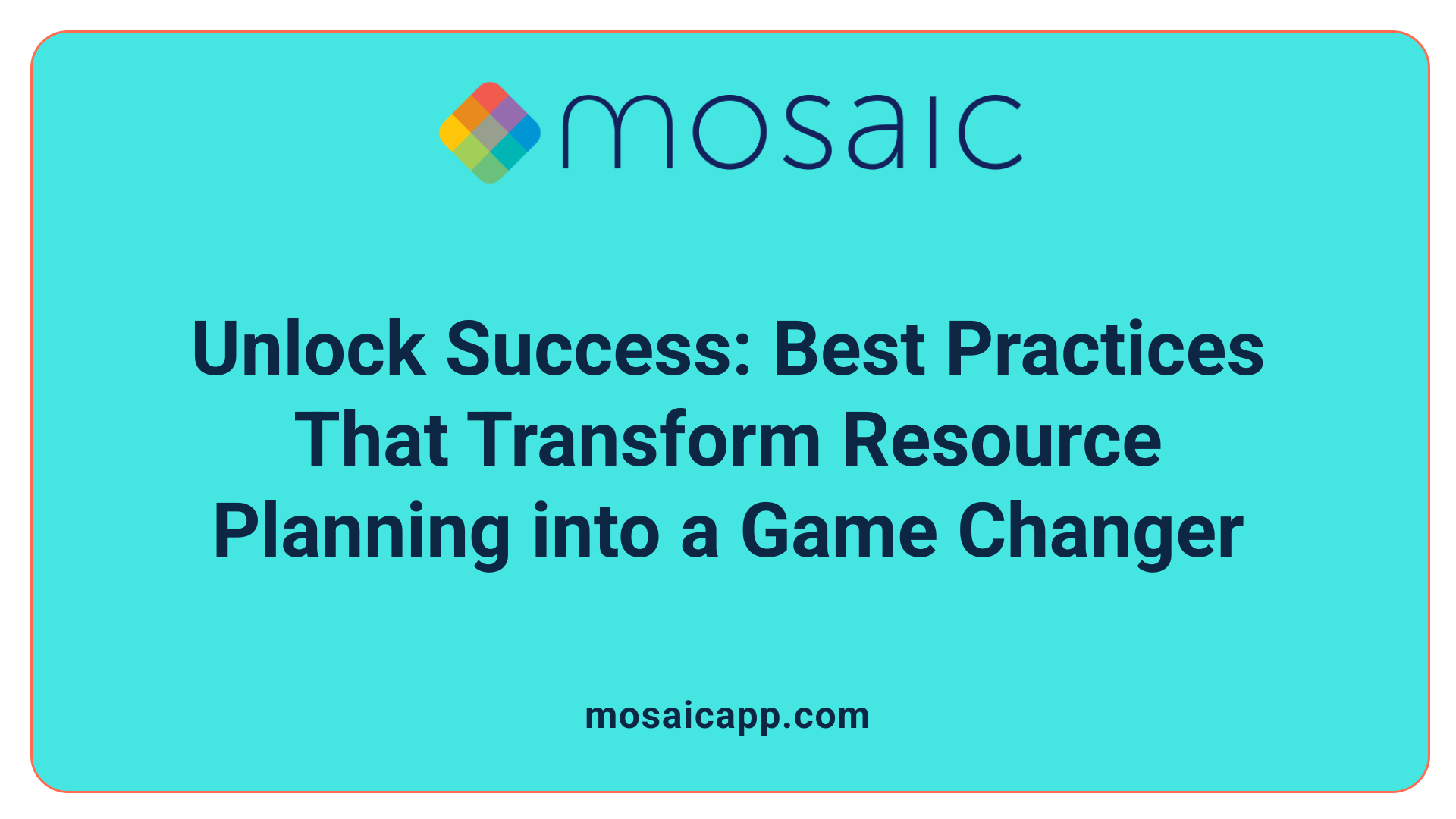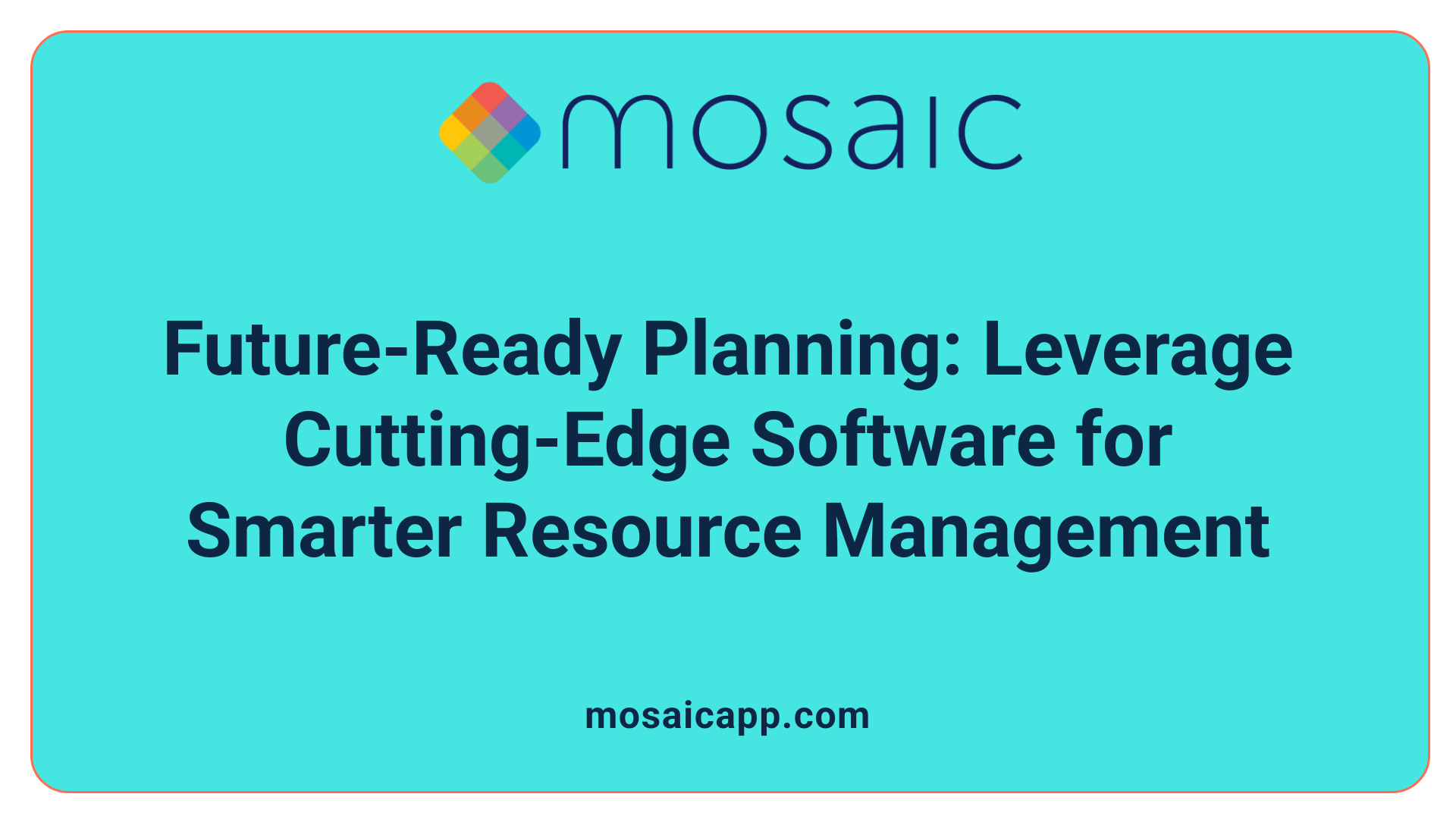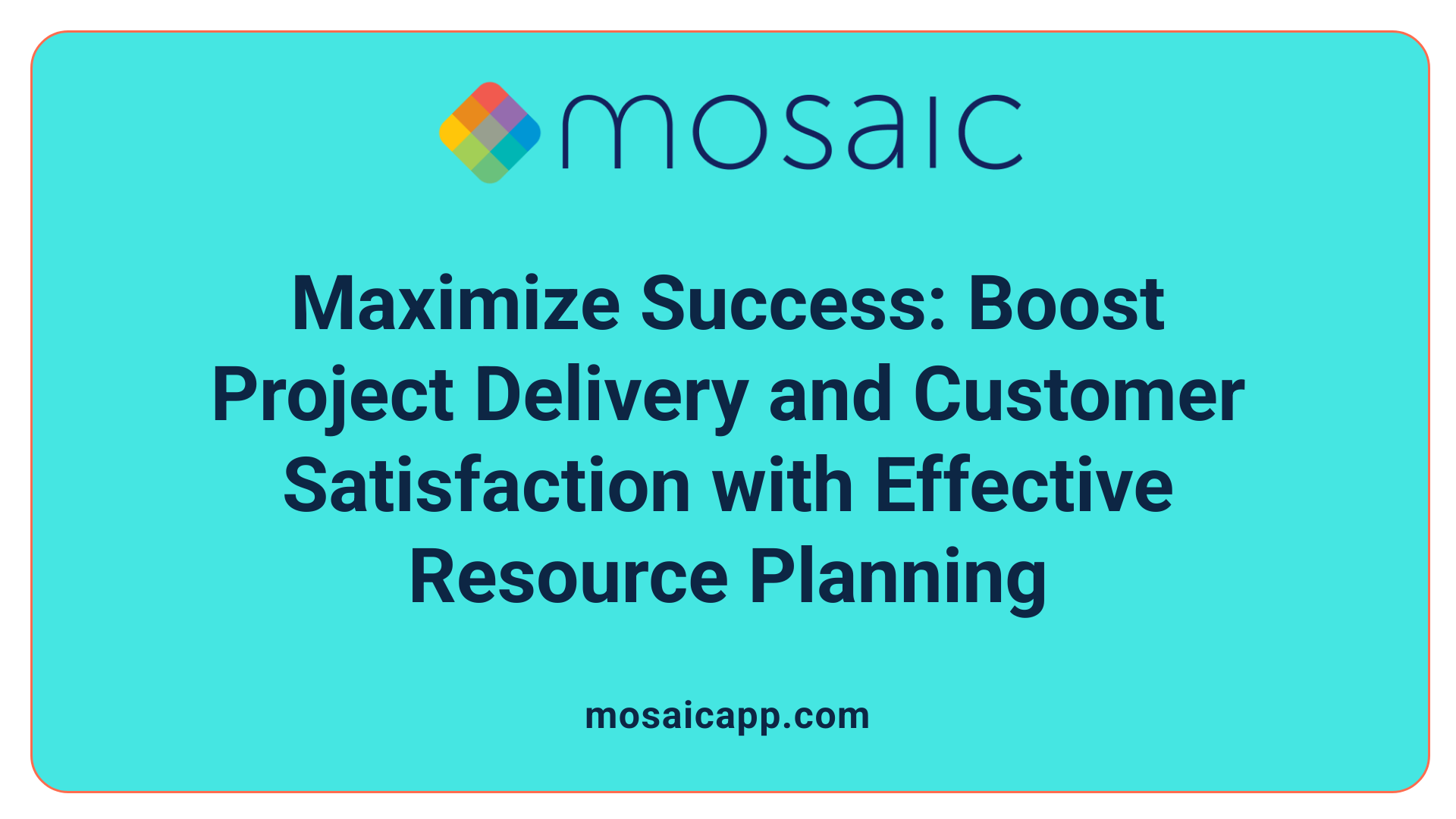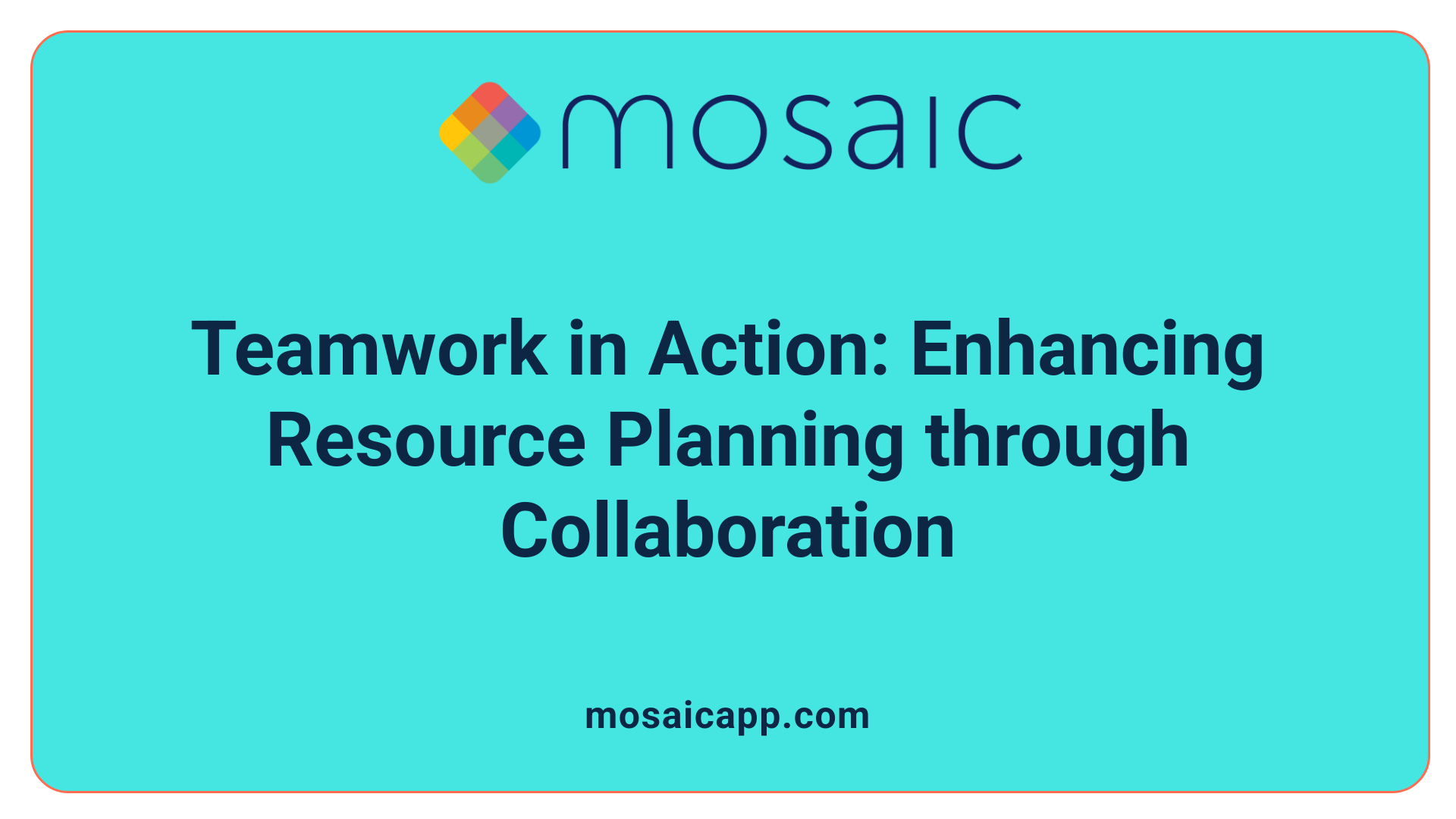The Hidden Engine Driving High-Growth Firms
In the rapidly evolving business landscape, where adaptability and efficiency dictate success, resource planning has emerged as a secret weapon behind the most dynamic and high-performing organizations. This article explores how resource planning — a strategic imperative involving the forecasting, allocation, and management of people, budgets, and tools — is fueling remarkable growth and profitability in firms across diverse industries.
Understanding Resource Planning: The Backbone of Project Success
What is Resource Planning?
Resource planning is the process of determining and securing the necessary resources—including people, budget, tools, and equipment—essential for completing a project successfully. It involves forecasting, identifying, allocating, utilizing, and managing these resources to meet the specific demands of a project and achieve organizational goals.
What are the Critical Components of Resource Planning?
Resource planning includes several important components:
- Resource Identification: Assessing what resources are required based on the project scope.
- Resource Allocation: Assigning the right people and materials to tasks according to availability and skills.
- Scheduling: Planning when and how resources will be used throughout the project's timeline.
- Monitoring: Continuously tracking resource utilization to ensure efficiency and to adapt to changes.
- Capacity Planning: Evaluating resource availability in relation to current and upcoming projects to avoid bottlenecks.
By mastering these elements, organizations balance workload, avoid conflicts, and maintain project momentum.
How Does Resource Planning Form the Foundation of Project Management?
Effective resource planning begins with a clear definition of the project scope, which guides the estimation of resource needs. This foundation supports the entire project management lifecycle by ensuring that resources are optimally allocated and scheduled.
With proper planning, projects stay on schedule and within budget, reduce risks associated with resource shortages or imbalances, and improve team productivity. Resource planning also facilitates communication among stakeholders, enabling real-time updates and adjustments as project demands evolve.
In summary, resource planning is essential to project success because it provides the structure to manage people, finances, and materials efficiently, ensuring timely delivery and quality outcomes.
How Effective Resource Planning Elevates Efficiency and Cuts Costs
Improvements in Team Productivity
Effective resource planning ensures the right people are assigned to the right tasks, which significantly boosts team productivity. By carefully matching skills to project requirements and balancing workloads, teams can work more efficiently without burnout or idle time. This alignment empowers employees to contribute their best work and helps avoid the pitfalls of misallocation that cause delays and quality issues.
Reduction of Project Costs and Waste
Resource planning helps organizations optimize their use of personnel, equipment, and budgets, resulting in notable cost reductions. By avoiding overuse of resources and minimizing downtime, resource planning reduces wasted time, effort, and money. Furthermore, identifying gaps in capacity early allows teams to adjust plans proactively rather than incurring expensive last-minute fixes.
Timely Completion Enabled by Balanced Resource Allocation
Proper scheduling and allocation of resources enable projects to stay on track and within budget. Balanced resource deployment ensures that no resource bottlenecks or conflicts occur, which could delay deliverables. Continuous monitoring of resource utilization supports dynamic adjustments, helping meet deadlines consistently and maintain customer satisfaction.
Risk Mitigation Through Resource Visibility
Maintaining real-time visibility into resource usage plays a crucial role in mitigating project risks. Insight into availability, workloads, and potential bottlenecks allows managers to address issues before they escalate. This foresight supports agile decision-making and strategic reallocation, reducing the chance of costly overruns or compromised quality.
Resource planning, when done well, directly leads to smoother project execution, less waste, and stronger profitability by aligning resources with project needs and organizational goals.
Strategic Versus Operational Resource Planning: Aligning Short- and Long-Term Goals
What Are the Differences Between Operational and Strategic Resource Planning?
Resource planning can be divided mainly into two types: operational and strategic. Operational resource planning focuses on the day-to-day allocation and management of resources to ensure that ongoing project tasks and activities run smoothly. It deals with immediate resource demands, ensuring adequate staffing, equipment, and budget are available to meet daily objectives.
In contrast, strategic resource planning looks beyond daily operations to anticipate long-term resource needs that align with the organization's growth and sustainability goals. It involves forecasting future demand, capacity planning, and preparing for resource fluctuations by hiring, training, or reallocating resources over an extended period.
How Does Each Type Support Daily Activities and Future Growth?
Operational resource planning supports daily activities by managing resource availability, balancing workloads, and preventing bottlenecks. This hands-on approach improves project delivery times and helps teams meet deadlines efficiently.
Strategic planning, on the other hand, guides future growth by assessing the pipeline of projects, aligning resources with high-value initiatives, and identifying capacity gaps early. It ensures that the company can sustain its business objectives by planning for skill development, recruitment, and investment in new technologies.
How Do These Planning Approaches Integrate With Overall Business Strategy and Sustainability?
Both operational and strategic resource planning must be integrated within a company’s broader business strategy to maximize impact. Operational planning guarantees execution excellence, delivering projects on time and within budget, which directly influences profitability and customer satisfaction.
Strategic resource planning embeds sustainability by aligning resource allocation with long-term organizational goals. It allows businesses to adapt to market changes, embraces emerging trends like AI and automation, and invests appropriately in workforce capabilities. Together, they create a balanced approach that supports both immediate success and enduring competitiveness.
By combining operational agility with strategic foresight, organizations can optimize resource use, mitigate risks, and foster sustainable growth.
Best Practices That Make Resource Planning a Game Changer

Why Is Clear Communication and Stakeholder Involvement Crucial?
Clear communication ensures that all team members and stakeholders have a shared understanding of resource allocation, project goals, and timelines. Active involvement of stakeholders in resource planning helps align expectations, secures necessary approvals, and facilitates timely adjustments when project demands change. Together, they build trust and foster collaboration—critical elements for a smooth project flow.
How Does Continuous Monitoring and Flexibility Improve Resource Planning?
Resource planning isn’t a set-it-and-forget-it task. Continuous monitoring allows managers to track resource utilization in real-time, quickly identifying potential bottlenecks or underutilization. This real-time insight supports dynamic adjustments, enabling plans to remain flexible amid evolving project requirements or unexpected challenges. Flexibility in planning helps avoid delays, reduces risks, and maintains project momentum.
Why Is Documentation and Learning from Historical Data Important?
Thorough documentation of resource plans and their outcomes creates a valuable knowledge base for future projects. By analyzing historical data, teams can recognize patterns, forecast more accurately, and avoid repeating past mistakes. This practice also supports upskilling employees and stress-testing assumptions, ultimately improving decision-making and increasing the efficiency of resource allocation over time.
Incorporating these best practices—effective communication, ongoing monitoring with adaptability, and robust documentation—makes resource planning a true game changer, driving project success and organizational growth.
Leveraging Technology: How Modern Resource Management Software Transforms Planning

What Features Define 5th Generation Resource Management Software?
Modern 5th generation resource management software brings comprehensive tools that revolutionize how organizations plan and utilize resources. These tools include:
- Real-time Key Performance Indicators (KPIs): Instant access to project and resource performance metrics enables proactive decision making.
- Scenario Analysis: Users can simulate different planning scenarios to forecast impacts and make informed adjustments.
- Capacity Assessment: Evaluates current resource availability against project demands to optimize allocation.
- Heat Maps and Intelligent Matchmaking: Visually identify resource availability and match skills to tasks efficiently.
- Task Management and Workflow Automation: Streamline processes and reduce manual effort by automating repetitive tasks.
How Do Integration Capabilities and Templates Support Resource Planning?
Platforms like Confluence enhance resource planning through seamless integration with other tools and built-in templates. These features enable:
- Collaborative Access to Updated Plans: Team members can view, update, and comment on plans in real-time, fostering transparency.
- Efficient Documentation: Templates standardize the resource planning process, ensuring consistency and accuracy.
- Smooth Data Flow Across Systems: Integration connects project management, time tracking, and scheduling tools, reducing redundant data entry.
What Benefits Do Visualization and Dynamic Adjustment Bring?
Resource management software maximizes planning efficiency by:
- Visualizing Workloads: Clear graphical views of resource allocation prevent conflicts and help balance workloads.
- Identifying Overlaps: Detects resource conflicts early to avoid delays.
- Dynamic Plan Adjustment: Allows real-time updates in response to shifting project priorities or resource availability, improving agility.
Embracing these technologies empowers organizations to boost productivity, minimize costs, and ensure timely project completion by making resource planning more precise and adaptive.
Case Insight: Collaborative Platforms Empowering Resource Planning
How do collaborative tools like Confluence improve team coordination in resource planning?
Collaborative platforms such as Confluence play a crucial role in streamlining resource planning by fostering seamless team coordination. They provide a centralized environment where team members can access project details, resource plans, and updates instantly. This transparency ensures that every participant stays aligned on resource allocation, scheduling, and project status, reducing miscommunication and enhancing overall efficiency.
What benefits do real-time updates, access to current information, and documentation provide?
Real-time updates enable teams to respond quickly to changes such as resource availability or project scope alterations, helping to minimize delays and conflicts. Access to the most current information guarantees that all decisions are based on accurate data, improving resource utilization and project forecasting. Furthermore, thorough documentation within these platforms captures the entire planning process, providing an audit trail and facilitating knowledge transfer for future projects.
In what ways does integration improve resource management workflows?
Integration capability is a standout feature of collaborative platforms like Confluence, allowing them to connect with resource planning software and other project management tools. This integration streamlines workflows by automatically syncing data, reducing manual entry errors, and enabling features like workload visualization and dynamic scheduling adjustments. It empowers resource managers and project teams with comprehensive insights and control over resource allocation, capacity, and utilization—all within a unified system.
How Resource Planning Drives Project Delivery Excellence and Customer Satisfaction

Ensuring Projects Stay on Schedule and Within Budget
Resource planning is essential for keeping projects on track and within financial limits. By accurately assessing work hours and required skills, project managers can allocate resources efficiently. This precise allocation helps avoid delays caused by resource shortages or overbooking, ensuring timely completion without unexpected budget overruns.
Optimizing Project Costs by Preventing Resource Mismanagement
Effective resource planning reduces wasted time, money, and effort by eliminating risks associated with mismanaging human resources. Careful forecasting and monitoring of resource utilization help identify and address capacity gaps early. Consequently, projects avoid costly last-minute staffing adjustments or underutilized resources, optimizing the overall project budget.
Improving Lead Time Accuracy and Avoiding Team Overcommitment
By providing clear visibility into resource availability and workload, resource planning improves the accuracy of project lead times. Teams are less likely to be overcommitted as planners can balance assignments with employees’ current capacity and skills. This balance not only reduces burnout but also enhances customer satisfaction through better project time estimates and delivery reliability.
Overcoming Common Resource Planning Pitfalls
What challenges arise in resource planning?
Resource planning frequently encounters obstacles such as resource conflicts and communication breakdowns among teams. These challenges can derail project timelines and complicate allocation decisions, leading to inefficiency and frustration.
How do manual spreadsheet errors and visibility issues affect planning?
Relying on manual spreadsheets often introduces errors and increases the risk of outdated or incomplete information. This lack of overall visibility hinders accurate forecasting and makes it difficult to identify resource shortages or surpluses early enough.
Why is early pipeline planning and balanced workforce management crucial?
Failing to plan for upcoming projects well in advance can cause resource bottlenecks and last-minute scrambling. Additionally, without a balance between permanent and contingent workforce, organizations might either overspend or face skill shortages. Effective resource planning includes pipeline forecasting and managing a mix of full-time employees and contractors to adapt to fluctuating demands.
What strategies help avoid these pitfalls?
- Implementing resource management software to ensure real-time data access and updates
- Encouraging clear and continuous communication among stakeholders
- Developing flexible plans that accommodate priority changes
- Automating routine planning tasks to reduce manual errors
These approaches empower organizations to improve resource visibility, prevent conflicts, and align staff capabilities with project requirements, ultimately enhancing productivity and reducing costs.
Resource Planning as a Tool for Sustainable Growth and Profitability

How does resource planning balance short-term performance with long-term organizational goals?
Resource planning plays a crucial role in reconciling immediate project demands with future business ambitions. By providing clear visibility into resource capacity and demand, organizations can allocate personnel and budget effectively without overextending their capabilities. This balance ensures that short-term projects are completed efficiently while preserving the ability to invest in strategic initiatives that support sustainable growth.
In what ways does resource planning enable prioritization of high-value projects and risk mitigation?
Through comprehensive scheduling and capacity forecasting, resource planning allows decision-makers to prioritize projects that deliver the greatest value. It surfaces potential resource conflicts early, supporting proactive adjustments and risk mitigation. Strategic resource allocation helps organizations avoid bottlenecks and underutilization of talent, ensuring that critical projects receive the appropriate focus and expertise.
How can resource planning boost profit margins through streamlined operations?
Effective resource planning reduces waste, cuts costs, and accelerates project delivery by aligning the right skills with the right tasks at the right time. It minimizes delays and budget overruns, which directly improves profitability. Additionally, by identifying underutilized resources, businesses can maximize revenue opportunities without incurring additional staffing expenses.
By integrating forward-looking resource management strategies, organizations enhance operational agility, improve workforce satisfaction, and achieve a stronger financial position, making resource planning a vital contributor to sustainable growth and profitability.
The Roles Behind Resource Planning: Collaboration Between Resource and Project Managers

How Do Resource Managers and Project Managers Coordinate Efforts?
Resource managers and project managers work closely to ensure the effective use of people and tools for project success. Resource managers focus on planning and allocating resources based on skills and capacity, while project managers define the project scope and request needed resources. This collaboration ensures that resource plans align with project requirements and timelines.
What Are Their Responsibilities in Capacity Analysis, Skill-Based Allocation, and Monitoring Progress?
Resource managers analyze team capacity and skill sets to allocate staff appropriately, balancing workload and availability. They continuously monitor resource utilization and address any concerns to maintain productivity. Project managers track project progress, coordinate activities, and ensure resources are deployed effectively to meet milestones and deadlines.
How Do Shared Responsibilities Support Project Success?
By sharing responsibilities, resource and project managers reduce resource conflicts and optimize allocation. This partnership facilitates clear communication, early identification of potential bottlenecks, and timely adjustments. Together, they maintain alignment between available resources and project objectives, supporting efficient, on-time, and on-budget project delivery.
Emerging Trends Shaping the Future of Resource Planning
How Is AI and Automation Transforming Resource Requisition and Forecasting?
Artificial Intelligence (AI) and automation are revolutionizing resource planning by streamlining requisition processes and elevating forecasting accuracy. Automated requisition systems reduce manual workload, swiftly matching resource needs with availability, while AI-driven predictive models analyze historical data and project trends. This empowers managers to anticipate resource demands more precisely, minimizing shortages or overallocation and enhancing decision-making efficiency.
What Role Does Agile Resource Planning Play?
Agile resource planning introduces flexibility and adaptability in managing resources amid changing project requirements. Unlike traditional rigid plans, agile methodologies facilitate continuous monitoring and dynamic reallocation, allowing teams to respond quickly to priority shifts or unforeseen obstacles. This approach promotes stakeholder collaboration and faster adjustment cycles, leading to higher productivity and better alignment with project goals.
What Advances in Software Tools Are Supporting Modern Resource Planning?
The latest generation of resource management software integrates predictive analytics with workflow automation to optimize resource use. Features such as multi-dimensional analysis, scenario planning, and real-time KPIs provide comprehensive capacity assessments. Intelligent matchmaking tools dynamically assign resources based on skill and availability, while automated workflows minimize administrative burden. These innovations collectively enable organizations to plan proactively, reduce risks, and maintain business agility.
Together, the adoption of AI and automation, agile methodologies, and advanced software tools are shaping the future of resource planning by enhancing precision, responsiveness, and efficiency in managing people, budgets, and equipment across industries.
Harnessing Resource Planning to Power Next-Level Growth
Resource planning is no longer a backstage function but a strategic cornerstone for high-growth firms. By integrating comprehensive planning practices, leveraging advanced technologies, and fostering collaborative management, organizations can optimize resources, reduce costs, accelerate project delivery, and sustain profitability. As businesses face increasing complexity and competition, embracing resource planning as a secret weapon will be essential for unlocking unprecedented growth and resilient success.
References
- Resource Planning: How to Keep Projects Running Smoothly
- What is Resource Planning? A Comprehensive Guide
- What is Resource Management and Why Is It Important?
- 7 Powerful Benefits of Resource Planning for Any ...
- Resource Planning in Project Management: Boost ...
- Why Resource Management is Important For Professional ...


